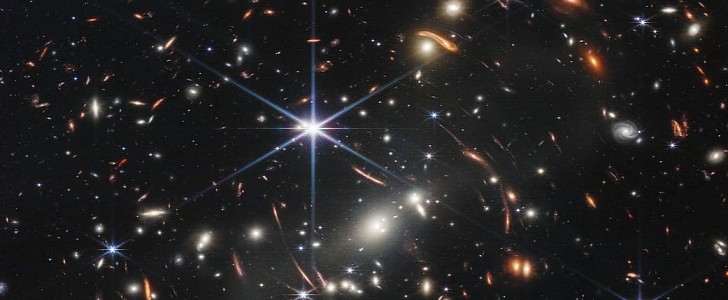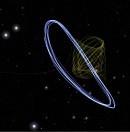On July 11, President Joe Biden unveiled the first image taken by NASA's James Webb Space Telescope during a White House event. It's the sharpest image of the early universe to date, showing thousands of galaxies and stars in great detail.
It's been a wild ride for the powerful James Webb telescope. After almost three decades of development and repeated delays, NASA's observatory was launched into orbit on Christmas morning.
It took several months of cooling and instrument calibrations, but now we're finally able to get a glimpse of the early universe in unprecedented detail. President Biden revealed on Monday the first image captured by Webb, a galaxy cluster named SMACS 0723. Known as Webb's First Deep Field, the picture marks the official beginning of the telescope's science operations, and it's just the first out of many expected to be released on Tuesday (July 12).
While we've seen before crisp views of stars from Webb, those were just the calibration test images. Although impressive, the recently-unveiled picture is absolutely breathtaking. Through the telescope's eyes, we can see thousands of galaxies and early celestial objects. And this is just a slice of the sky about "the size of a grain of sand held out at arm's length."
"Webb's First Deep Field is not only the first full-color image from the James Webb Space Telescope, it's the deepest and sharpest infrared image of the distant universe, so far. This image covers a patch of sky approximately the size of a grain of sand held at arm's length. It's just a tiny sliver of the vast universe," said NASA Administrator Bill Nelson.
We're looking back in time at the SMACS 0723, and we're seeing what the galaxy cluster appeared like 4.6 billion years ago. Its total mass works as a gravitational lens, a magnifying glass to us that reveals early galaxies. It even shows smaller objects such as star clusters and other structures that have never been observed before by any telescope.
It took several months of cooling and instrument calibrations, but now we're finally able to get a glimpse of the early universe in unprecedented detail. President Biden revealed on Monday the first image captured by Webb, a galaxy cluster named SMACS 0723. Known as Webb's First Deep Field, the picture marks the official beginning of the telescope's science operations, and it's just the first out of many expected to be released on Tuesday (July 12).
While we've seen before crisp views of stars from Webb, those were just the calibration test images. Although impressive, the recently-unveiled picture is absolutely breathtaking. Through the telescope's eyes, we can see thousands of galaxies and early celestial objects. And this is just a slice of the sky about "the size of a grain of sand held out at arm's length."
"Webb's First Deep Field is not only the first full-color image from the James Webb Space Telescope, it's the deepest and sharpest infrared image of the distant universe, so far. This image covers a patch of sky approximately the size of a grain of sand held at arm's length. It's just a tiny sliver of the vast universe," said NASA Administrator Bill Nelson.
We're looking back in time at the SMACS 0723, and we're seeing what the galaxy cluster appeared like 4.6 billion years ago. Its total mass works as a gravitational lens, a magnifying glass to us that reveals early galaxies. It even shows smaller objects such as star clusters and other structures that have never been observed before by any telescope.
???? Sneak a peek at the deepest & sharpest infrared image of the early universe ever taken — all in a day’s work for the Webb telescope. (Literally, capturing it took less than a day!) This is Webb’s first image released as we begin to #UnfoldTheUniverse: https://t.co/tlougFWg8B pic.twitter.com/Y7ebmQwT7j
— NASA Webb Telescope (@NASAWebb) July 11, 2022








